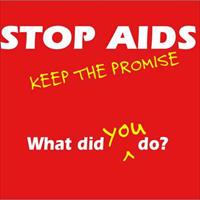CHAD: HIV/AIDS is not the only threat to life

Decentralised HIV/AIDS services are slowly being rolled
out with the backing of donors and the government, but in many remote areas of
this huge country (nearly 1.3 million square kilometres, with a population of
less than 10 million), these have yet to become a reality.
In Danamadji, an area in the southeast of Sahr, the
third largest city in Chad,
near the border with the Central African Republic (CAR), the poorest people
cannot afford an HIV test that should be free, said Randjita Beoudoum, 42,
coordinator of the United Association for Sustainability and Action for
Positive Life (UPAV+), a network of HIV-positive people.
"There is no electricity, so when someone wants a
test we ask them to pay 150 CFA francs [US$0.33] because we need fuel to start
up the generator set," said Beoudoum, who has been living with the virus
for about 20 years. "We've appealed on radio until we're blue in the face
to at least get a mobile testing centre, but nobody comes to help."
UPAV+ has around 400 members in the region and assists
people with HIV/AIDS, most of whom live in villages in the bush. "We do
home visits in each village, using our cow-drawn cart, and ... if [a patient]
cannot stand up, we pick them up ... When we have two or three people we set
off for the hospital in Sahr," he told IRIN/PlusNews.
It takes a day and a half to cover the 125km between
Danamadji and Sahr, the only town in the area where antiretroviral (ARV) drugs
are available. "We [can] lose people along the way because they are too
[weak]," Beoudoum said. His organisation lost five people in 2007.
The journey can also be dangerous. "There are lots
of elephants in the region and they can attack you. To escape from them we have
a sound system on the cart and we put music on really loud to scare them off
into the forests," he said. "Once, when we didn't put the music on,
the elephants attacked us. We abandoned the cows and ran. People from the
villages came to our rescue."
The "axis of death" in the
south
With HIV infection rates as high as 9.8 percent
(compared to 3.3 percent nationally), the south is one of the areas worst
affected by the epidemic. A road that many Chadians call the "axis of
death" runs for hundreds of kilometres from the CAR to N'Djamena, capital
of Chad,
through the oil-producing regions of the south.
The strong economic activity attracts traders and
people from other countries, but also brings an increased risk of spreading
HIV/AIDS in an area where treatment services are scarce, according to AIDS
workers.
Denial and ignorance in other regions
The situation is not any easier for patients in
Oum-Hadjer, administrative centre of the central Batha-est region. Those needing
ARVs or CD4 tests (to assess the immune system's resistance) have to travel to
Abéché, around 150km to the east. Most of these patients live in extreme
poverty.
"ARVs are free now [since 2007] but this is
theoretical for us because it costs 5,000 CFA francs [$1.00] to do the return
journey to Abéché. On top of this you have to pay for accommodation, food, and
treatments for opportunistic infections. Few make the journey," said
Giscard Sirrobe Ignabaï, president of ANNIDAL, which means "combat"
in Arabic, a youth association for people living with HIV, established in March
2007.
"When we come across someone who is sick and weak,
and we still have some money left in the organisation's fund, we help them with
their medical treatments," he said. In spite of their efforts, he felt
that the huge obstacles to obtaining treatment were causing the health of
HIV-positive people to decline and their life expectancy was falling.
In the largely Muslim eastern and northern areas of Chad, AIDS
organisations have noted that it is much more difficult to raise awareness of
issues linked to sexuality and AIDS.
"It seems that people ignore the fact that bad
things happen," said Sirrobe Ignabaï. "For many people here, it is
blasphemous to speak of sexuality and AIDS. We are trying to raise alarm bells,
but people refuse to listen to us."
Of the 16,415 people screened across the country in
2006, only 3 percent took the test in the east and north, compared to 66
percent in the south and 31 percent in the capital, according to official
statistics.
Difficulties recognised
The government has also found it difficult to
decentralise healthcare. Besides problems with the management of HIV/AIDS
funding from the World Bank and the Global Fund to Fight AIDS, Tuberculosis and
Malaria, which led them to suspend funding for many months during 2006 and
2007, and delayed the expansion of HIV/AIDS services in the provinces, Chad is
also struggling with a lack of health workers.
"There are no more than 300 doctors in the whole country
and less than 200 of them have received ARV prescription training," said
Dr Djouater Barou, coordinator of the National Programme to Fight AIDS (PNLS).
"And they are not everywhere: at the general hospital in N'Djamena there
are thirty-odd, but in certain areas [of the provinces] they only have
one."
To alleviate staff shortages and inadequate training in
the provinces, PNLS and its partners have started training nurses to write
repeat ARV prescriptions, while those managing ARV stocks will be trained this
year.
PNLS is also attempting to combat myths about the
illness and develop infection prevention programmes in high-risk areas of the
south, and in the isolated areas of the east and north, which are most exposed
to insecurity due to tensions with neighbouring Sudan.
 Back and Next - Back and Next
Back and Next - Back and Next See Also - See Also
See Also - See Also